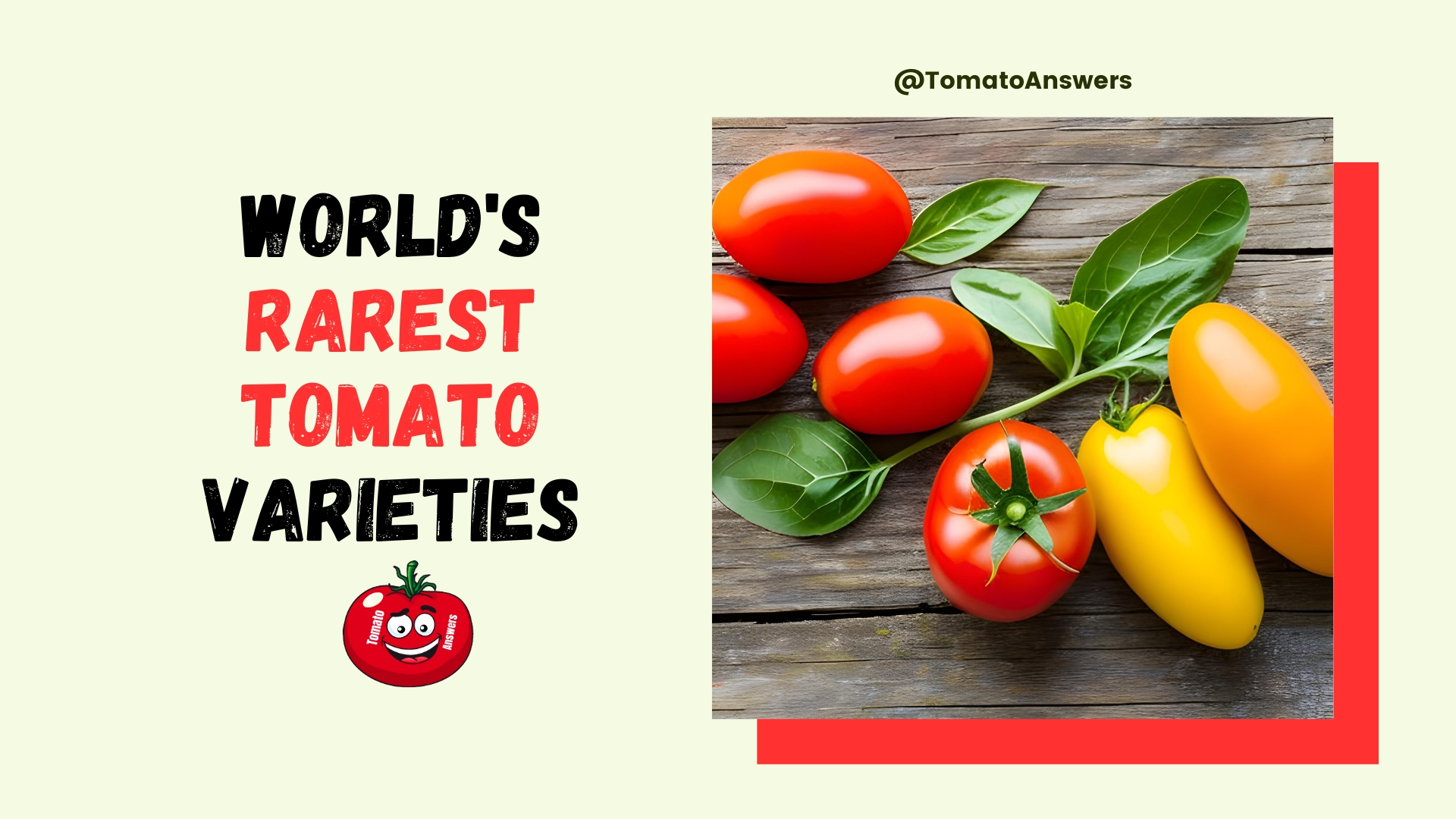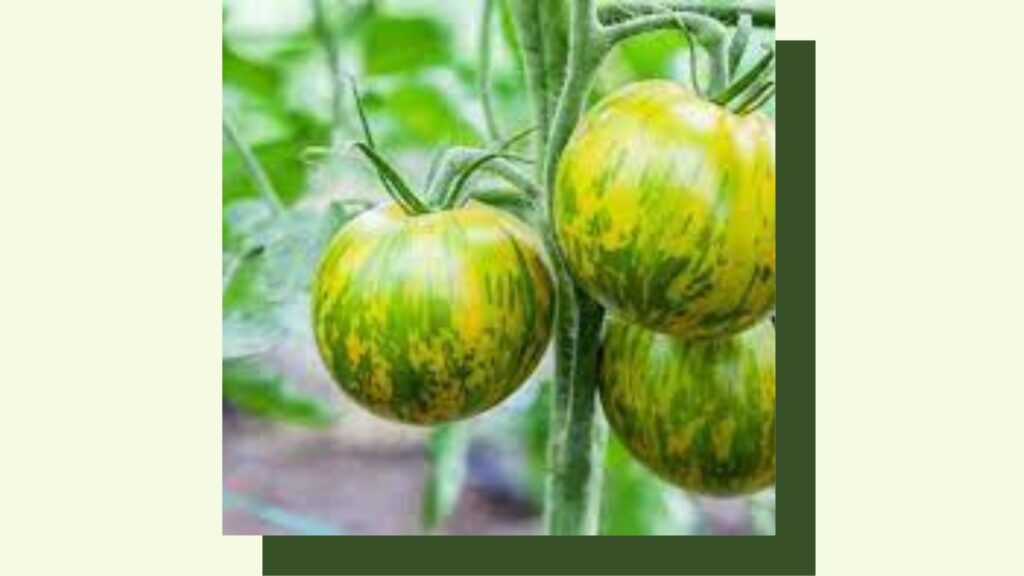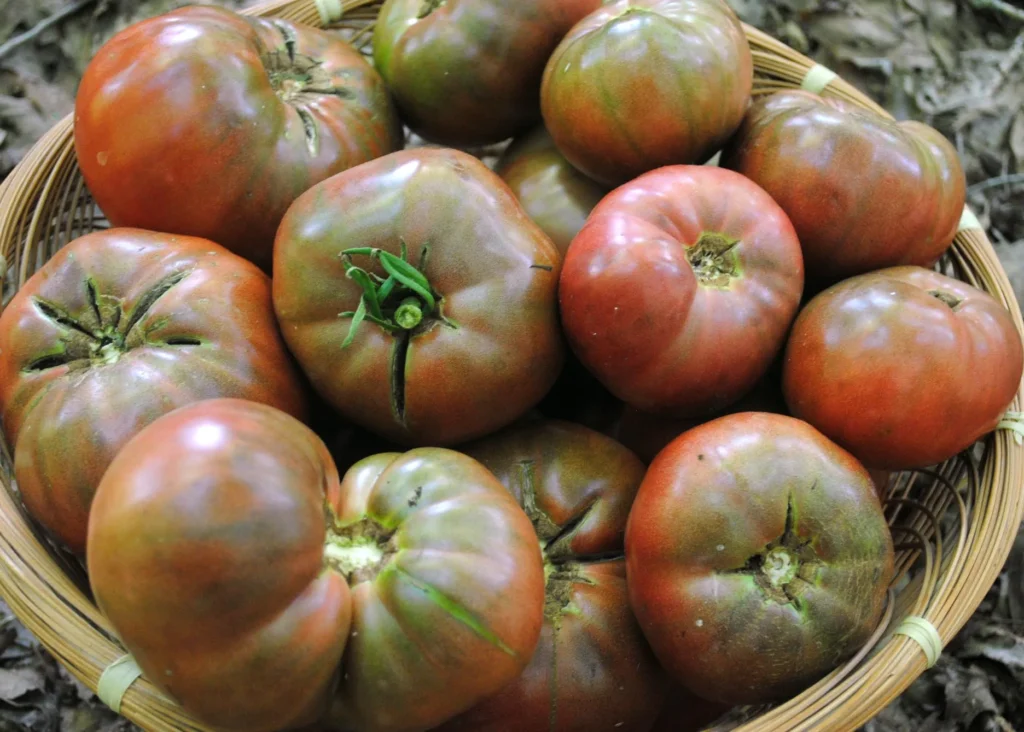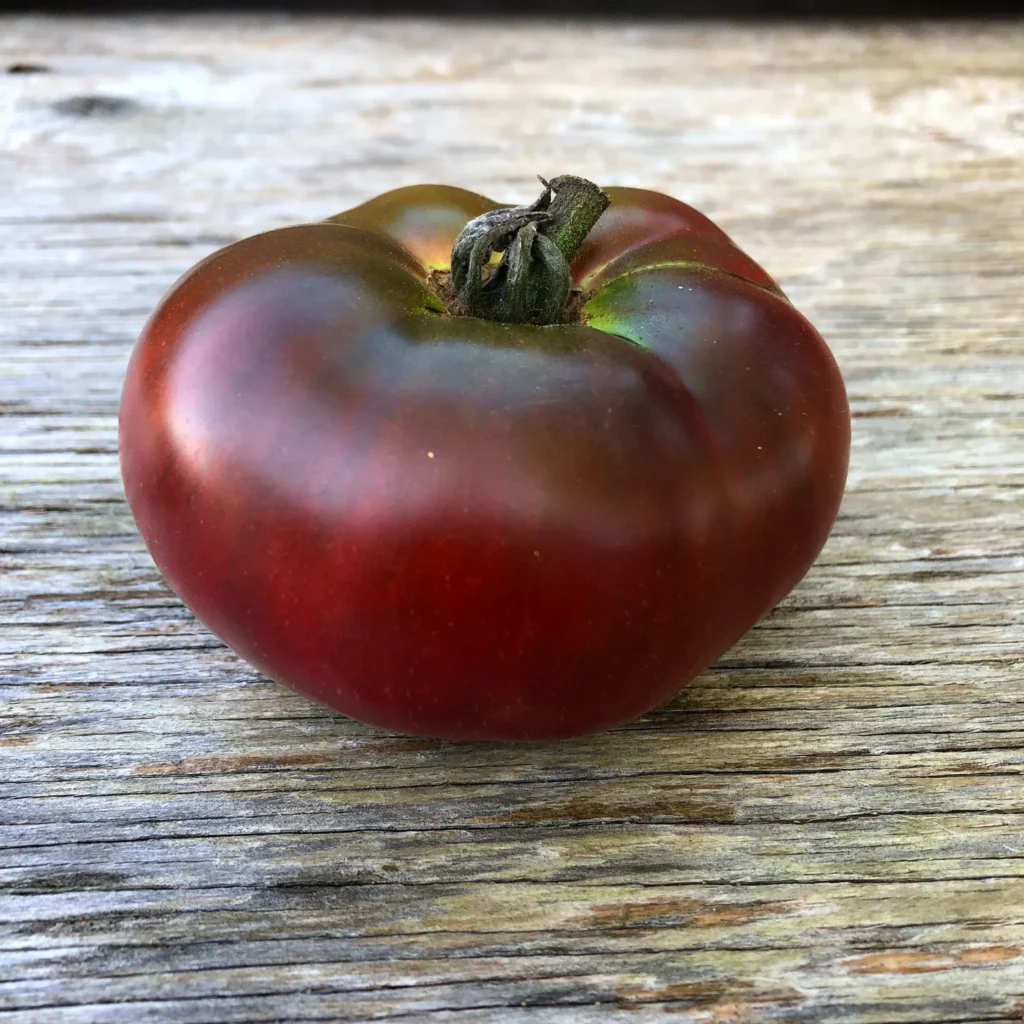Key Takeaways
– 🍅 There are rare and exotic tomato varieties with unique flavors, colors, and shapes.
– 🌍 Exotic tomato varieties come from various regions with different climates and soil conditions.
– 🌈 Heirloom tomatoes are open-pollinated cultivars, preserving genetic diversity and exceptional flavors.
– 🍆 Top 10 rare tomato varieties include Purple Calabash, Green Zebra, Cherokee Purple, Ananas Noire, Aunt Ruby’s German Green, Giant Syrian, Black Krim, Hillbilly Potato Leaf, Carbon, and Blue Beauty.
– 🌱 Tips for growing heirloom tomatoes: choose certified seeds, start indoors, provide support, consistent watering, monitor for problems, and handle ripe fruit gently.
– 💡 You can save heirloom tomato seeds by selecting healthy fruit, drying them, and labeling them for future seasons.
– 🍽️ Uses for rare tomato varieties: create colorful salads, stuff with cheese, make sauces, appetizers, BLT sandwiches, and more.
– 🌿 Benefits of heirlooms: preserve biodiversity, offer superior flavor, enable creativity, and support sustainable farming.
– 🌟 Exploring further: countless exotic tomato varieties have unique characteristics.
– 🔍 Tips for finding rare tomato varieties: seed swaps, specialized nurseries, online communities, be patient and persistent.
– 🌄 Conclusion: Heirloom tomatoes are a treasure trove of flavors and colors, preserving genetic diversity and offering a fulfilling culinary adventure.
World’s Rarest Tomato Varieties: Discover the Top 10
World’s Rarest Tomato Varieties offer a compelling journey into the hidden pockets of gardening wonders. While many are acquainted with the standard tomatoes gracing our salads and sandwiches, few have ventured into the world of these extraordinary varieties.
Each carries its own story, a blend of history, culture, and nature’s artistry. As we step into this exploration, prepare to be enchanted by the vibrant colors, intricate patterns, and unparalleled flavors of the globe’s most exceptional tomatoes.
Exploring Exotic Tomato Varieties
One of the most exciting aspects of tomato hunting is discovering exotic tomato varieties worldwide. Each type of tomato has its unique flavor, texture, and color, making for a fascinating and delicious culinary experience.
Some exotic tomato varieties originate from areas where the climate and soil conditions differ from those in the United States.
For example, the Black Krim tomato is originally from the Crimea region of Russia. It has a distinct, smoky flavor, while the Yellow Stuffer tomato from Hungary is known for its sweet and juicy flesh.
Other exotic tomato varieties result from careful breeding and development by farmers and gardeners worldwide.
The Green Zebra tomato, developed in the United States, has a tangy and sweet flavor with green and yellow stripes, while the Chocolate Stripes tomato from Germany has a rich, meaty flavor with brown and red lines.
Top 10 World’s Rarest Tomato Varieties
Beyond the typical grocery store tomato, there exists a vast world of rare, heirloom tomato varieties. Home gardeners and specialty farmers grow unique tomatoes with intriguing shapes, colors, and flavors. Here are some of the rarest tomatoes found across different regions.
Overview of Heirloom Tomatoes
Heirloom tomatoes are open-pollinated cultivars passed down for generations:
“Heirloom tomatoes have an incredible depth of flavor and diversity.” – Aisha, Organic Farmer
- Derived from family-saved seeds rather than hybrids.
- They have exceptional flavor not found in commercial tomatoes.
- Offer a rainbow of colors beyond red.
- Possess unique shape variations.
- Understand diseases and have resilience.
- Preserve the agricultural heritage and biodiversity.
These cherished heirlooms have stories behind their origins.
1. Purple Calabash – South Africa
This stunning deep purple-burgundy tomato has a flattened irregular shape resembling a calabash gourd.
- Striking deep purple skin when ripe.
- Deliciously rich, complex flavor with earthy overtones.
- Smooth, meaty flesh, perfect for sauces.
- Believed to be over 100 years old.
- It makes a beautiful salad sliced horizontally.
The vibrant purple-black hue is visually and culinarily exotic.
2. Green Zebra – California
This chart-topping tomato has zesty green and yellow zebra stripes when ripe.
- Bright green with lime yellow stripes.
- Sweet, tangy, and citrusy flavor.
- Small 2-3 inch size perfect for snacking.
- Created by Tom Wagner in the 1980s.
- Adds sparkly flavor to salsas and salads.
One of the most sought-after green tomato varieties today.
3. Cherokee Purple – Tennessee
This dusky rose-purple tomato has a smoky, rich flavor.
- Drab brownish-purple skin when ripe.
- Dark brick red juicy flesh.
- Complex sweet and spicy smoky taste.
- Believed to be over 100 years old.
- Makes stellar sauces and salsas.
It is a favorite American heirloom with exceptional depth of flavor.
4. Ananas Noire – Belgium
This aptly named variety has oddly pineapple-shaped fruit in green, yellow, and purple shades.
- Elongated pointed ends resemble a pineapple.
- Creamy texture with excellently balanced flavors.
- Interior can be green, pink, or purple.
- Created by Irma Henze in Belgium.
- It’s a spectacular addition to a cheese board.
One of the most uniquely shaped heirlooms.
5. Aunt Ruby’s German Green – Virginia
This large beefsteak tomato ripens to a dazzling neon green with a sweet, fruity flavor.
- Vibrant green when ripe, unlike unripe tomatoes.
- Meaty, juicy flesh with little seediness.
- Mildly sweet and fruity taste.
- It dates back to the Shenandoah Valley in the 1800s.
- It stands out sliced on a burger or in a salad.
The fluorescent ripe green color is eye-catching.
6. Giant Syrian Tomato – Middle East
This mammoth pink tomato can weigh up to 5 pounds, making it the heaviest tomato.
- It can reach 15-20 inches across in diameter.
- It’s often over 2 pounds but can hit 5.
- Fragile skin with firm, juicy flesh.
- Mild tangy taste with some sweetness.
- Eat fresh or cooked into sauces.
A behemoth tomato and a single slice can feed several people!
7. Black Krim – Crimea
This subtly colored tomato has an earthy, full-bodied taste.
- Dark green with brown-red hues when ripe.
- Deep crimson juicy flesh with little seeds.
- Complex, savory-sweet, and wine-like flavor.
- Brought from Crimea to the U.S. in the early 1900s.
- Ideal for rich sauces and tomato paste.
The nuanced flavors shine when this black beauty is oven-roasted.
8. Hillbilly Potato Leaf – West Virginia
Despite its unflattering name, this heirloom tomato has superb flavor.
- Oblate shape with flattened ends similar to a potato.
- Bright red skin and dense, juicy flesh when ripe.
- It has a sweet, rich taste with a nice acid balance.
- Leaves resemble a potato plant rather than a tomato.
- Makes phenomenal sauces and salsas.
Don’t let the name fool you – this mountain tomato bursts with old-fashioned flavor.
9. Carbon Tomato- Wisconsin
The Carbon tomato is named for its deep coal-colored skin and meat.
- Extremely dark grey-black skin and flesh.
- Meaty texture with little juice or seeds.
- Mild smoky-sweet taste when cooked.
- Originated with Jeff Dawson in the early 2000s.
- It is stunning when sliced, highlighting the dramatic interior.
The gothic-colored exterior of the Carbon conceals a surprisingly mild flavor.
10. Blue Beauty Tomato – Oregon
This sharp-tasting purple tomato will surely be the star in any tomato lineup.
- Stunning deep indigo color exterior.
- Vibrant magenta flesh on the inside when cut.
- Sweet yet zingy flavor with spicy undertones.
- Released commercially in the early 2000s.
- Spectacular grilled or roasted to intensify the flavor.
The electric colors make the Blue Beauty visually intriguing in any recipe.
Tips for Growing Heirlooms
Follow these tips to grow rare heirloom tomatoes successfully:
- Select properly certified heirloom seeds from reputed companies.
- Start seedlings indoors early for a head start on the growing season.
- Transplant seedlings are spaced generously to allow total growth.
- Use cages, trellises, and supports to manage prolific growth.
- Provide consistent watering and nutrition in well-draining soil.
- Monitor for common tomato problems like blossom end rot.
- Pick ripe fruit promptly and handle gently to prevent bruising.
With careful cultivation, you can have a bountiful harvest of heirlooms.
Saving Seeds
You can preserve these heritage varieties by saving seeds from year to year:
- Select the healthiest, best fruit from each plant for seeds.
- Scoop out the gel and pulp surrounding the seeds.
- Place seeds in a single layer on a plate to dry fully.
- Store thoroughly dried seeds in an envelope or jar in a cool place.
- Label seeds with plant name and year collected.
- Next season, start seeds indoors 6-8 weeks before transplanting.
Pass down these food treasures by saving your heirloom seeds.
Uses for Rare Tomato Varieties
These uncommon tomatoes can be used creatively:
- Create a rainbow salad or bruschetta with different colored slices.
- Stuff small varieties with cheese or mushroom filling.
- Roast large quantities to make tomato sauce or jam.
- Serve tomato halves drizzled with vinaigrette as an appetizer.
- Make BLT sandwiches with colorful strips of bacon, lettuce, and tomato.
- Grill or pan-fry thick tomato slices and top with parmesan.
- Bake more petite tomatoes drizzled with olive oil and herbs.
Let these heirlooms shine by using simple preparations highlighting their vibrant hues.
Benefits of Heirlooms
Heirloom tomatoes offer many benefits:
- Preserve the agricultural and culinary heritage.
- Maintain genetic diversity.
- Provide superior depth of flavor.
- Enable creativity in the kitchen.
- Bring novelty to home gardens.
- Reduce the environmental impact of commercial hybrids.
- Help support small sustainable farms.
These living legends have stories to tell from the past while also holding promise for the future.
Exploring Further
There are countless exotic tomato varieties, each with unique characteristics and history. Some of my personal favorites include the Pineapple tomato, the Orange Strawberry tomato, and the White Zebra tomato.
Exploring and experimenting with exotic tomato varieties can be a fun and delicious adventure for any enthusiast. By trying different varieties, you can expand your palate and gain a deeper understanding and appreciation of the diverse world of tomatoes.
So why not embark on your tomato journey and try exotic varieties today?
Unearthing Heirloom Tomato Gems
Heirloom tomato varieties are delicious and essential in preserving genetic diversity. These rare tomato varieties have been passed down through generations, carefully cultivated for their unique flavors and qualities.
One of the rarest heirloom tomato varieties is the Cherokee Purple, originating from the Cherokee tribe of the southeastern United States. With its dark-red hue and complex, sweet flavor, the Cherokee Purple is popular for heirloom tomato enthusiasts. Another rare variety is the Mortgage Lifter, a large, meaty tomato with a rich, sweet flavor and a history dating back to the 1930s.
Heirloom enthusiasts also treasure the Old German tomato, known for its large size and bold, tangy flavor. The Green Zebra tomato, with its striking green stripes and tart, citrusy taste, is another sought-after variety.
The Value of Heirloom Tomato Varieties
Heirloom tomato varieties are tasty and contribute to biodiversity by preserving unique genetics and flavors. These rare vegetable varieties are essential to our agricultural heritage and should be celebrated and cultivated.
“Preserving biodiversity is a major challenge in agriculture. By cultivating rare heirloom tomato varieties, we are helping to preserve genetic diversity and strengthen our food systems.” – John, heirloom tomato enthusiast.
The Hunt for Rare Tomato Varieties
As a tomato enthusiast, I understand the thrill of embarking on a hunt for rare tomato varieties. These unique and elusive tomato gems can be challenging to track down, but the reward of tasting their delicious flavors makes the effort worthwhile.
One option for finding rare tomato varieties is through seed swaps. These events, held by gardening enthusiasts and organizations, allow individuals to exchange seeds from their collections. This can be a great way to acquire new tomato varieties that may not be available commercially.
Specialized nurseries are another option for sourcing rare tomato varieties. These nurseries often offer heirloom and exotic tomato varieties that are difficult to find elsewhere. However, be prepared to pay a premium price for these rarities.
For those comfortable with online purchasing, numerous online communities are dedicated to rare vegetable varieties, including tomatoes. These communities often offer a wide selection of rare tomato varieties for purchase and valuable information and resources for tomato lovers.
When embarking on the hunt for rare tomato varieties, it’s essential to be patient and persistent. Not all tomato varieties are readily available; some may require time and effort. But the reward of tasting a unique and delicious tomato variety is well worth the journey. Happy hunting!
Conclusion: World’s Rarest Tomato Varieties
Beyond the supermarket varieties, a treasure trove of rare heirloom tomatoes exists thanks to the work of gardeners, farmers, and seed savers who nurture these genetic gems.
From the massive Giant Syrian to the ghoulishly colored Carbon, heirlooms display nature’s boundless creativity. Their intriguing histories, availability in limited supplies, and outstanding flavors make growing and tasting heirloom tomatoes a fulfilling adventure for any food lover.
With some care to grow these fragile plant darlings, you can harvest summer’s most extraordinarily hued and flavored fruits.
FAQ about the World’s Rarest Tomato Varieties
Q: What are the world’s rarest tomato varieties?
A: The world’s rarest tomato varieties include the Black Russian, Brandywine Pink, and Green Zebra. These tomatoes are known for their unique flavors and colors, which are hard to find in conventional tomatoes.
Q: Where can I find exotic tomato varieties?
A: Exotic tomato varieties are often found at specialty markets, farmer’s markets, and online seed stores. Some nurseries also carry a selection of exotic tomato plants for those looking to grow their own.
Q: What makes heirloom tomato varieties unique?
A: Heirloom tomato varieties are unique because they are open-pollinated and have been passed down through generations. They often have distinctive flavors and appearances that have been preserved over time.
Q: How can I start my tomato treasure hunt?
A: To start your tomato treasure hunt, consider joining seed swaps, connecting with tomato enthusiasts on online forums or social media groups, and exploring specialized nurseries focusing on rare tomato varieties. These resources can help you discover and acquire rare tomato seeds or plants for your collection.
Q: Why is it essential to preserve rare tomato varieties?
A: Preserving rare tomato varieties is essential for maintaining genetic diversity and ensuring the future availability of unique flavors and traits. By growing and appreciating these rare vegetable varieties, we contribute to preserving our culinary heritage and help safeguard against biodiversity loss.




